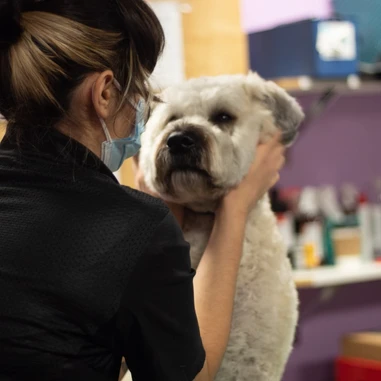The eye comprises specialized cells and receptors called rods and cones. Rods are responsible for detecting motion and aiding vision in varying shades of light, while cones help to differentiate color.
People have three types of cones, while dogs have two. People can generally identify three color combinations (red, blue, and green), while dogs are limited to two (yellow and blue). Dog color vision is therefore described as dichromatic or “two-colored.”
Having yellow-blue dichromatic vision means that dogs are most similar to a red-green color-blind person. They are very good at distinguishing between variations of blues and yellows but cannot see red and green all that well.
Humans may have the advantage in color vision, but dogs have specific visual skills that humans lack, like increased night vision, a wider range of view, and a sharp eye for motion. This is because dogs’ eyes have more light-gathering power than ours. A dog’s retina is largely composed of cells called rods, which can sense light, even in very low-light conditions. This allows your dog to pick up on small movements and detect the presence of strangers or prey.
Like other predatory animals, dogs have a layer of reflective membrane at the back of their eyes. This membrane bounces light not absorbed by rods to the retina, which allows the eye to take in additional light and strengthens their nighttime vision. This also makes it look like dogs’ eyes glow in the dark or are bright yellow in pictures taken with a flash of cameras.
Keep this in mind if your dog struggles to find toys or treats. It may not be that he or she is disinterested—they likely can’t see what you’re trying to give him. The next time you shop for dog toys, try something blue or yellow that will stand out better for your dog.
Loss of vision over time is common in the aging dog as it is in the human. Still, any abrupt changes should be evaluated by your veterinarian as soon as possible.
If you have concerns about your dog’s vision or if you notice they are having difficulty seeing, call your primary care veterinarian for a thorough eye examination.

